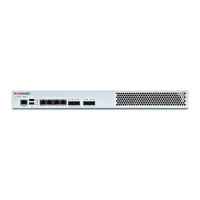How to set up your FortiWAN Configuring Network Interface (Network Setting)
Configuring your WAN
[WAN Settings] is the major part to deploy FortiWAN in various types of WAN links. If your network has several WAN
links, you have to configure one after another. Select any link from [WAN link] and check [Enable] to start a
configuration of the WAN connection (See "WAN link and WAN port"). A configuration of WAN link is divided into
three parts: Basic Settings, Basic Subnet and Static Routing Subnet. Before starting configuration, here are several
important concepts you should know.
WAN Type
The first step to start a WAN link configuration is deciding the WAN type. Configuration varies on [WAN Type] in [Basic
Settings]. The [WAN Type] could be one of:
l
Routing Mode (See "Configurations for a WAN link in Routing Mode")
l
Bridge Mode: One Static IP (See "Configurations for a WAN link in Bridge Mode: One Static IP")
l
Bridge Mode: Multiple Static IP (See "Configurations for a WAN link in Bridge Mode: Multiple Static IP")
l
Bridge Mode: PPPoE (See "Configurations for a WAN link in Brideg Mode: PPPoE")
l
Bridge Mode: DHCP Client (See "Configurations for a WAN link in Bridge Mode: DHCP")
Basic Setting & Basic Subnet & Static Routing Subnet
Basic Setting :
Basic Setting is the necessary settings for a WAN link, such as WAN type, up/-
download bandwidth, threshold, netmask, gateway and the localhost IP, to
enable data transmission on a WAN link. The setting fields varies on the WAN types.
35 FortiWAN Handbook
Fortinet Technologies Inc.

